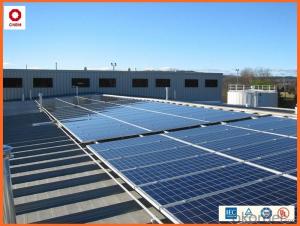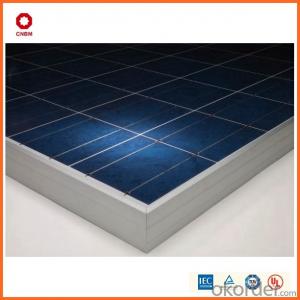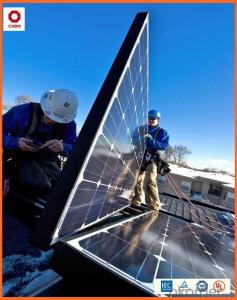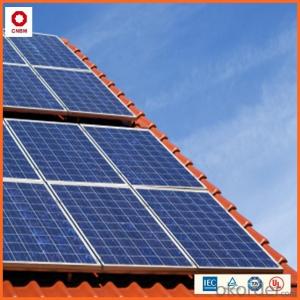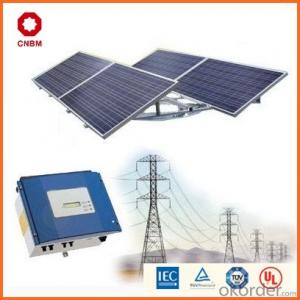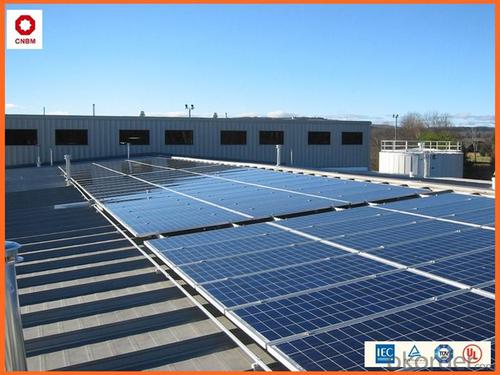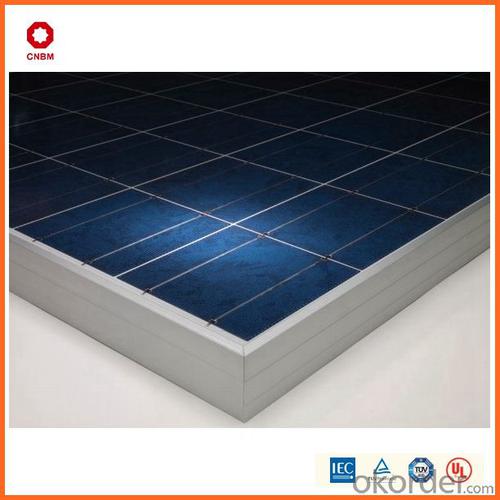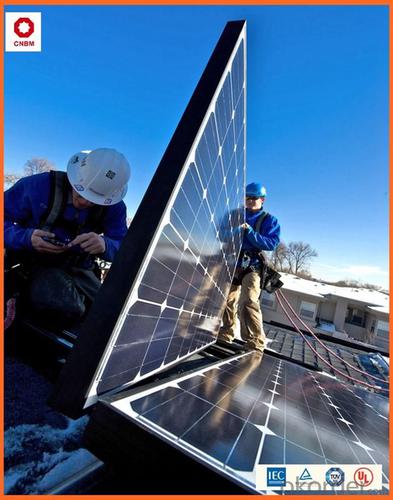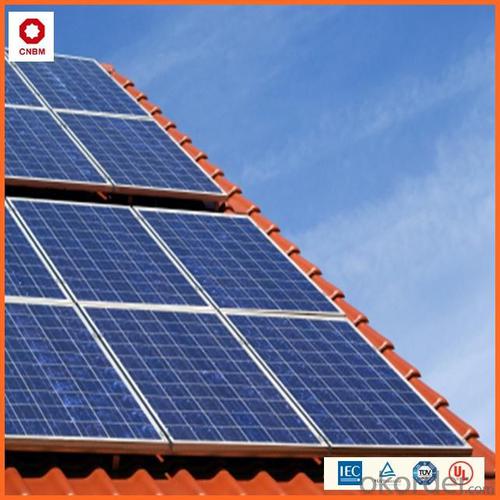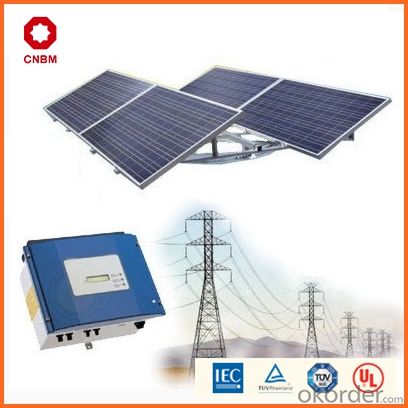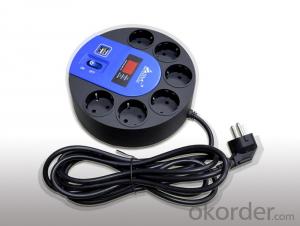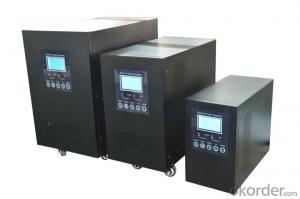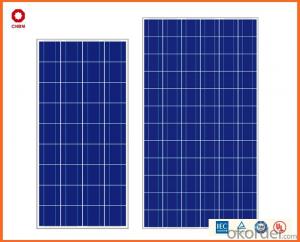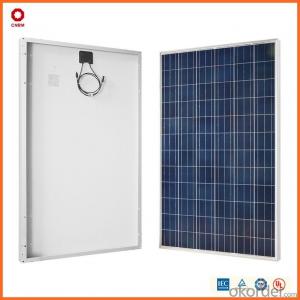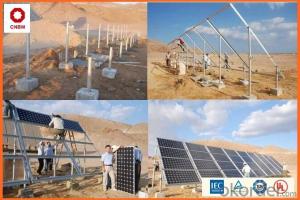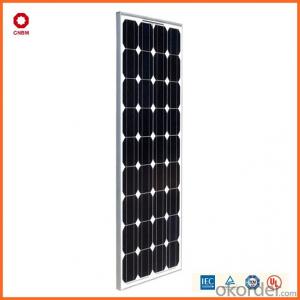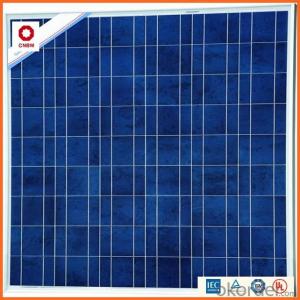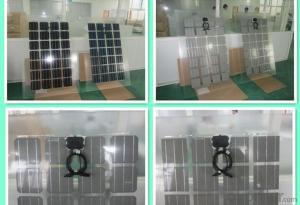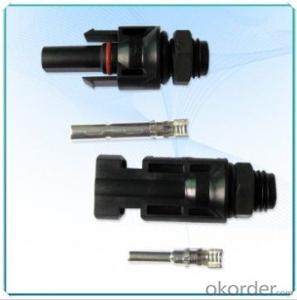Sol Sierra Solar Energy Systems - 55w Small Solar Panels in Stock China Manufacturer
- Loading Port:
- China main port
- Payment Terms:
- TT OR LC
- Min Order Qty:
- 1 watt
- Supply Capability:
- 10000000 watt/month
OKorder Service Pledge
OKorder Financial Service
You Might Also Like
Specification
Product Description:
Hot Sale !!! Quality and Safety of Small Poly Solar Panel 5w~150w
1. Rigorous quality control meets the highest international standards.
2. High-transmissivity low-iron tempered glass, strong aluminium frame.
3. Using UV-resistant silicon.
4. IS09001/14001/CE/TUV/UL
Warranties of Small Poly Solar Panel 35~85w
1. 10 years limited product warranty
2. 15 years at 90% of the minimal rated power output
3. 25 years at 80% of the minimal rated power output
Specification
Characteristics of Poly solar panels CNBM (245-320W) | |||||
Max Power Voltage Vmp(V) | 30.3 | 30.8 | 31.1 | 31.4 | 31.85 |
Max Power Current Imp(A) | 7.60 | 7.64 | 7.73 | 7.81 | 7.85 |
Open Circuit Voltage Voc(V) | 36.1 | 36.6 | 37 | 37.3 | 37.68 |
Short Circuit Current Isc(A) | 8.50 | 8.55 | 8.65 | 8.75 | 8.85 |
Max Power Pm(W) | 230W | 235W | 240W | 245W | 250W |
Temperature Coefficient of Cells Poly solar panels CNBM (245-320W) | |
NOCT | 45± 2 |
Temperature Coeffucients of Isc | 0.0492 |
Temperature Coeffucients of Voc | -0.3374 |
Temperature Coeffucients of Voc | -0.4677 |
Mechanical Data of Poly solar panels CNBM (245-320W) | |
Dimension | 1638 × 982 × 40 mm |
Weight | 19.5 kg |
No. of Cells and Connections | 60 (6 ×10) |
Tolerance | 0 ~ + 5 W |
Cell | Monocrystalline Cell 156 × 156 mm |
Packing | 624 Pcs/40ft(H) Container |
Limits of Poly solar panels CNBM (245-320W) | |
Operating Temperature | -40 to +85 |
Storage Temperature | -40 to +85 |
Max System Voltage | 1000VDC(IEC) / 600VDC(UL) |
Features of our products:
• High conversion efficiency mono/poly-crystalline amorphous silicon solar cells
• Modules incorporate high performance bypass diodes to minimize the power drop caused by shading
• High transmittance, low-iron tempered glass
• High performance EVA encapsulant to prevent destroying and water.
• AI frame: without screw, corner connection. 8 holes on the frame can be installed easily
• Good performance of preventing from atrocious weather such as wind and hails
• Certifications: CE IEC TUV VDE UL, Class I
• 10 years 90% power output warranty
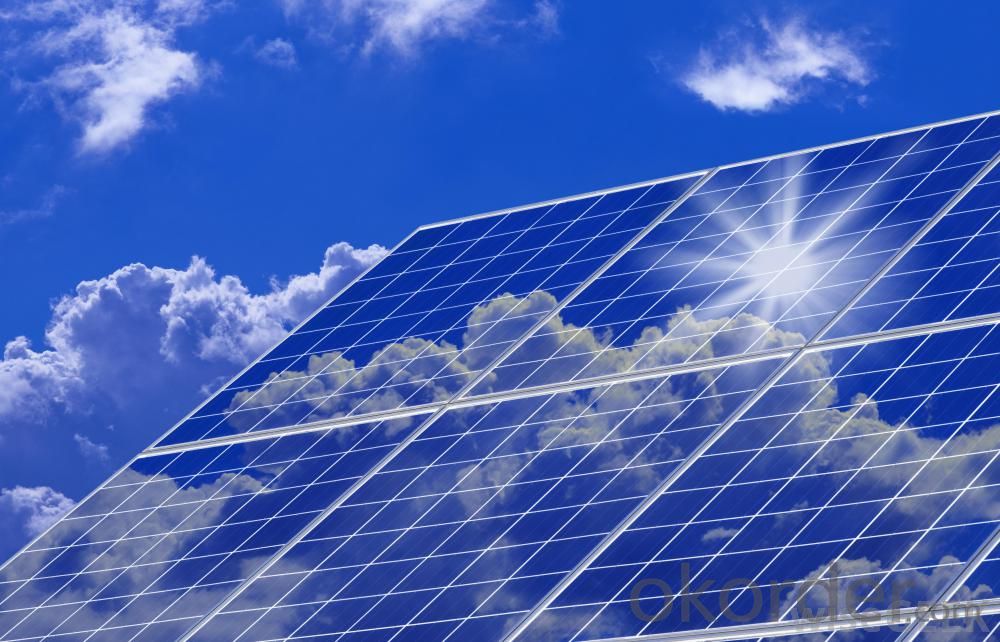
Shipping of Small Poly Solar Panel 35~85w
By Sea | Delivery from Shanghai or Ningbo seaport |
By Air | Departure from Shanghai Pudong Airport |
By Express | Post by DHL, EMS, UPS, TNT. |
Features of our products:
• High conversion efficiency mono/poly-crystalline amorphous silicon solar cells
• Modules incorporate high performance bypass diodes to minimize the power drop caused by shading
• High transmittance, low-iron tempered glass
• High performance EVA encapsulant to prevent destroying and water.
• AI frame: without screw, corner connection. 8 holes on the frame can be installed easily
• Good performance of preventing from atrocious weather such as wind and hails
• Certifications: CE IEC TUV VDE UL, Class I
• 10 years 90% power output warranty
As a professional Solar Panel manufacturer and Supplier in China, we have our customers come around the whole world and our specialization has got a worldwide recognition. Meanwhile, with our superior quality, competitive price, prompt and excellent service, As main role in trade section of CNBM Group, CNBM International Corporation supplies products including Monocrystalline Solar Panel, Polycrystalline Solar Panel ( multicrystalline silicon Solar Panel) have received and enjoyed famous reputation in many countries and regions in the world.
- Q: Can solar energy systems be used in countries with low sunlight availability?
- Yes, solar energy systems can still be used in countries with low sunlight availability. While the efficiency of solar panels may be slightly reduced in areas with less sunlight, solar energy can still be harnessed and utilized. Additionally, advancements in solar technology, such as the use of concentrated solar power and hybrid systems, have made it possible to generate electricity even in regions with limited sunlight.
- Q: Can solar energy systems be used in powering movie theaters or entertainment venues?
- Certainly, movie theaters and entertainment venues can absolutely utilize solar energy systems to provide power. The operation of these venues requires a substantial amount of electricity for their lighting, sound systems, projectors, and other equipment. Solar energy systems have the ability to generate clean and renewable electricity by harnessing the sun's power. By installing solar panels on the roofs or in the surrounding areas of these venues, they can generate a significant amount of electricity to fulfill their energy requirements. Not only can solar energy systems be designed to supply power for the basic infrastructure of movie theaters or entertainment venues, but they can also support additional energy-intensive features such as HVAC systems, concession stands, and even electric vehicle charging stations. By utilizing solar energy, these venues can greatly reduce their dependence on grid electricity, decrease operational expenses, and contribute to a more sustainable and environmentally friendly future. Besides the practical advantages, the installation of solar energy systems in movie theaters or entertainment venues can also serve as a demonstration of environmental responsibility and attract environmentally conscious audiences. Many individuals are becoming increasingly aware of the significance of renewable energy, and by showcasing their commitment to sustainability, these venues can enhance their brand image and appeal to a wider customer base. In conclusion, the utilization of solar energy systems to power movie theaters or entertainment venues is not only technically viable but also financially and environmentally beneficial. By harnessing the sun's power, these venues can diminish their carbon footprint, save on energy costs, and contribute to a greener future for the entertainment industry.
- Q: How does the efficiency of solar panels vary across different installation orientations?
- Solar panels can have varying degrees of efficiency depending on their installation orientation. The orientation of a solar panel refers to how it is positioned in relation to the sun's path. There are two main orientations: horizontal, which faces directly upwards, and tilted, which is angled towards the sun. Typically, solar panels that face south have the highest efficiency because they receive the most sunlight throughout the day. This is especially true in the northern hemisphere where the sun is positioned towards the south. South-facing panels are able to capture the maximum amount of sunlight, resulting in optimal energy production. On the other hand, solar panels facing east or west have slightly lower efficiency compared to south-facing panels. East-facing panels receive more sunlight in the morning, while west-facing panels receive more sunlight in the afternoon. However, both orientations receive less overall sunlight than south-facing panels, which leads to reduced efficiency. Among the common orientations, solar panels that are installed horizontally, like those found on flat rooftops, have the lowest efficiency. These panels do not have a specific direction to maximize sunlight absorption and are often less inclined towards the sun's path. As a result, they receive less direct sunlight throughout the day, resulting in lower energy generation compared to tilted or south-facing panels. It's worth noting that the efficiency of solar panels is also influenced by other factors such as shading, climate, and panel quality. Shading caused by nearby buildings, trees, or other obstructions can decrease efficiency by blocking sunlight. Additionally, the climate of a region and the quality of the solar panels themselves can also impact their efficiency. In conclusion, the efficiency of solar panels varies depending on their installation orientation. South-facing panels generally have the highest efficiency, while east, west, and horizontal orientations have lower efficiency levels. Factors like shading, climate, and panel quality also have an impact on the overall efficiency of solar panels.
- Q: How do solar energy systems impact regional economic development?
- Solar energy systems can have a significant positive impact on regional economic development. They create jobs in the installation, maintenance, and manufacturing sectors, stimulating local economies. Additionally, solar energy reduces dependence on imported fossil fuels, thus increasing energy security and decreasing energy costs for businesses and households. This, in turn, frees up funds for investment in other sectors, fostering overall economic growth and development in the region.
- Q: Can solar energy systems be used in areas with limited roof access for maintenance?
- Solar energy systems can indeed be utilized in areas where roof access for maintenance is limited. Although the usual practice is to install solar panels on rooftops for maximum exposure to sunlight, there are alternative choices to consider. One option is to install ground-mounted solar panels in areas where roof access is restricted, making maintenance and cleaning tasks simpler. Furthermore, solar panel systems can be integrated into other structures like carports or pergolas, offering an alternative approach to the conventional rooftop installations. These alternatives guarantee the effective utilization of solar energy systems in areas with limited roof access for maintenance.
- Q: What is the difference between a solar thermal system and a photovoltaic system?
- Solar energy systems come in different forms, such as solar thermal and photovoltaic systems, each serving distinct purposes. When it comes to heating, a solar thermal system takes the lead. It operates by harnessing the sun's energy and directly heating water or air. This is achieved through the use of solar collectors, which absorb sunlight and convert it into heat. The heated water or air can then be utilized for space heating, water heating, or even powering turbines to generate electricity. These systems are commonly utilized in residential, commercial, and industrial settings to provide efficient heating solutions. On the other hand, photovoltaic systems, often referred to as solar panels, are primarily designed to generate electricity. They make use of photovoltaic cells, typically composed of silicon, to directly convert sunlight into electrical energy through the photovoltaic effect. These cells are interconnected within solar panels, and multiple panels can be combined to create a complete photovoltaic system. The electricity produced by a photovoltaic system can be utilized to power electrical devices, appliances, or even be fed into the grid to offset energy consumption. To summarize, the key distinction between a solar thermal system and a photovoltaic system lies in their respective functions. While solar thermal systems focus on heating applications by directly utilizing the sun's energy to heat water or air, photovoltaic systems are specifically designed to generate electricity through the conversion of sunlight into electrical energy using solar panels.
- Q: What is the impact of bird droppings on the performance of solar panels?
- Solar panels can be significantly affected by bird droppings. When bird droppings land on the panels, they create a layer that blocks sunlight from reaching the photovoltaic cells. This decreases the panels' efficiency and reduces power generation. Bird droppings contain various organic and inorganic substances, which can form a film or crust on the panels' surface. This film traps moisture and dust, further obstructing sunlight and causing additional energy losses. Moreover, the acidic nature of bird droppings can corrode the metallic components of the panels. This corrosion damages the electrical connections and impacts the panels' overall performance and lifespan. To minimize the impact of bird droppings on solar panel performance, regular cleaning and maintenance are crucial. Promptly removing bird droppings is essential for optimal sunlight exposure and preventing potential damage. Additionally, installing bird deterrents like spikes or netting can reduce the frequency of bird droppings on solar panels and mitigate their negative effects.
- Q: Can a solar energy system be installed on a retail store or restaurant?
- Yes, a solar energy system can be installed on a retail store or restaurant. In fact, many businesses are opting for solar installations to reduce their energy costs and carbon footprint. With advancements in technology and flexible installation options, it is feasible to harness solar power even in urban areas.
- Q: Can a solar energy system be used to charge electric vehicles?
- It is indeed possible to utilize a solar energy system for the purpose of charging electric vehicles. The sun's rays are harnessed by solar panels, also referred to as photovoltaic (PV) panels, to generate electricity. This electricity can then be employed to charge the batteries of electric vehicles. The PV panels capture sunlight and convert it into direct current (DC) electricity. Subsequently, an inverter is used to transform this DC electricity into alternating current (AC) electricity, which aligns with the charging requirements of electric vehicles. By establishing a link between the solar energy system and an electric vehicle charging station, the solar-generated electricity can directly charge the vehicle's battery. This renewable energy source not only diminishes the dependence on fossil fuels but also aids in reducing the emission of greenhouse gases associated with transportation. Moreover, any surplus electricity generated by the solar panel system during daylight hours can be stored in batteries or returned to the grid for future use, guaranteeing a continuous and sustainable power supply for charging electric vehicles.
- Q: Can a solar energy system be installed on a data center or tech facility?
- Yes, a solar energy system can be installed on a data center or tech facility. In fact, many data centers and tech facilities are now embracing renewable energy sources like solar power to reduce their carbon footprint and lower their energy costs. A solar energy system can be installed on the roof or surrounding areas of the facility, utilizing the available space to generate clean and sustainable electricity. This not only helps the facility to become more environmentally friendly but also provides a reliable and independent source of power. Additionally, with advancements in solar technology, it is now possible to design and install solar systems that can cater to the high energy demands of data centers and tech facilities. By harnessing the power of the sun, these facilities can operate more sustainably and contribute to a greener future.
Send your message to us
Sol Sierra Solar Energy Systems - 55w Small Solar Panels in Stock China Manufacturer
- Loading Port:
- China main port
- Payment Terms:
- TT OR LC
- Min Order Qty:
- 1 watt
- Supply Capability:
- 10000000 watt/month
OKorder Service Pledge
OKorder Financial Service
Similar products
Hot products
Hot Searches
Related keywords
